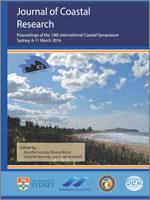Lee, H.S.; Kim, I.H., and Kim, H.G., 2016. Application of terrestrial 3D laser scanning to monitor changes of beach landforms. In: Vila-Concejo, A.; Bruce, E.; Kennedy, D.M., and McCarroll, R.J. (eds.), Proceedings of the 14th International Coastal Symposium (Sydney, Australia). Journal of Coastal Research, Special Issue, No. 75, pp. 173–177. Coconut Creek (Florida), ISSN 0749-0208.
Monitoring changes in the beach morphology of coastal landforms is important when considering coastal management measures. In this paper, to create a changing beach surface, point cloud data of the beach are obtained using three-dimensional (3D) terrestrial laser scanning (TLS), and a beach surface model is analysed based on 3D point data. The 3D point cloud is generated from the scanned beach, including breakwaters, and these points are registered and merged through a reference point (scan origin and ball target) surveyed by RTK-GPS. Noise elements and unnecessary points are eliminated to yield better surface modelling results. Mesh data of the scan point features are created from the integrated points and represent the beach surface of the triangulated irregular network (TIN) model. The 3D modelling of the mesh data enables the user to determine the width, length, and height of breakwater structures through outline extraction and analyse the beach profile. These dimensions of the structure are designed as a 2D plan. It is recommended that the point measurement interval must be dense to create a complete beach surface over a wide area. The approach to TLS appears to provide an efficient means of accurately measuring the beach surface.





